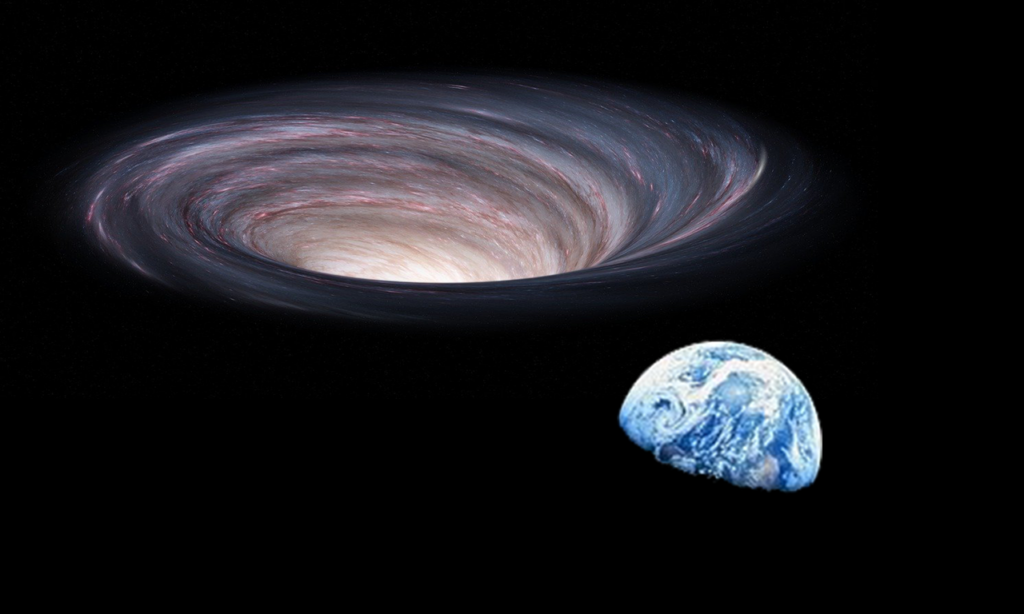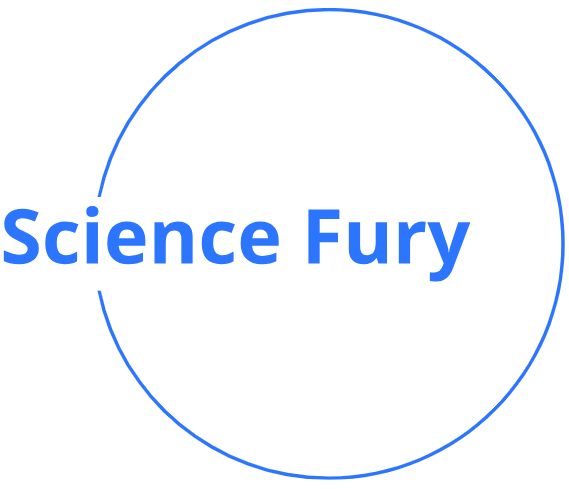
But what if a black hole literally appears on our doorstep.
What happens if an “uninvited guest” with a size of 1 mm “settles” near our Earth?
Physicists asked a similar question in 2008, when the Large Hadron Collider was launched.
Then, many scientists, among whom was also Stephen Hawking, feared that this greatest invention of mankind could create a multitude of microscopic black holes that would swallow everything around and we would cease to exist … forever.
Moreover, these are far from the only problems that were predicted by the opponents of the collider.
However, more than 10 years have passed since then, and if you are reading this article,
it means that the Large Hadron Collider works quietly away by itself and does not create
any dangerous pieces capable of destroying the Earth.
Or is that just for now?
Produce mini black hole:
In fact, to produce a mini black hole, you need 1015 times more energy than the Large Hadron Collider can withstand.
But even if we manage to use such a huge amount of energy, to create a micro black hole, we would need to work with the 4th dimension in space, which in this context isn’t particularly well studied or understood.
But suppose we miraculously manage to create a microscopic black hole in our limited and wretched 3D world.
I hasten to upset those who are looking forward to the apocalypse.
It would have to be postponed for some time.
Because in this case, the mini black hole is most likely to instantly evaporate, thanks to so-called Hawking radiation.
After all, black holes not only absorb energy, but also give it away!
So, the Large Hadron Collider does not threaten us at all.
At least in any case, until the time we learn to use a large amount of energy and fully explore the 4th dimension in space.
However, microscopic black holes can occur even without the Large Hadron Collider.
The fact is that right now billions of black holes pervade our planet!
So, what is happening?
Are we doomed, and the earth would soon be torn apart into small pieces by mysterious, space objects?
Relax, it is not so bad.
At least for now … After all, our multi-million army of black holes has been attacking our home planet for billions of years!
At the same time, the mass of individual black voraciousness could reach up to 100 tons, but their size is not more than an atom!
Such a small diameter gives rise to a correspondingly small “event horizon” —a hypothetical
the line beyond which space and time are bent and matter begins to be absorbed and torn apart by atoms.
For this reason, the mini black hole can’t devour even the bacteria on your dining table.
But even if it starts to eat our home planet, it will take a very long time – several billion years in fact.
By this time, humanity is likely to have become extinct, or else it would have found another place of residence in the universe.
However, there is one thing … If the diameter of the mini black hole increases to the size visible to the naked eye, the events would turn out completely differently.
We will not baffle your brains with complex calculations from the strange world of higher physics, but according to calculations, a black hole with a diameter of 1 mm would have a mass of more than five lunar masses combined, which is about 11% of the Earth’s mass.
The scale of the influence of a black hole depends on where it is located: on the surface of the earth, in the center of the planet or, for example, in the room of the guy you hate.
Black monster
Suppose that a black monster, 1 mm in size, is located on the surface of the Earth.
The sphere of influence of a black hole would be about a third of the Earth’s radius, about 1,320 miles (2124 kilometers).
This would lead to a noticeable increase in the overall gravity of the Earth, which in turn would affect the orbit of the moon.
It would stray off the current course and begin to move in an elliptical orbit.
But, if the Moon only changes its course and remains alive, another and more terrible fate would await us and all matter in close to this monster.
If we were close, we would have been torn to pieces.
And it would happen so quickly that we would not even have time to blink an eye.
Having settled with us, the black hole would purposefully move to the center of the Earth and no one can stop it.
Without common obstacles, it would absorb everything and reach the center of the Earth in just 42 minutes.
An insatiable monster passing through the core of the earth and in about the same time it would reach the other side of the surface.
But the black hole, too, would not stand still.
If its relative speed is at least 12 km / s, or 7.5 miles / s, it would rotate around the Earth along with its sphere of gravitational influence.
With each circle, the earth would lose its mass.
Thus, the black hole would begin its meal: absorbing the crust and most of the mantle.
It means our complete destruction and destruction of all life on the surface of the Earth.
But before absorbing all living things, the black hole “smoothest out the corners”, apparently, to make it easier to eat.
Thus, the gas would twist into a gravitational spiral, like sugar during the creation of cotton candy.
The nearest black hole to the earth
The nearest known black hole to Earth is V616 Monocerotis, also known as V616 Mon. It is located about 3,000 light-years away from Earth in the constellation Monoceros. V616 Mon is a stellar-mass black hole, which means it was formed from the collapse of a massive star. It was first discovered in 1994 when it caused a bright outburst of X-rays that was detected by orbiting X-ray telescopes.
It’s worth noting that V616 Mon is not considered a threat to Earth or our solar system. Black holes are known for their strong gravitational pull, but their effects are only felt within a certain distance. V616 Mon is far enough away from Earth that its gravitational pull does not pose any danger to us.
There may be other black holes closer to Earth that have not yet been discovered, but V616 Mon is currently the closest known black hole. Scientists continue to study black holes and their effects on the universe, and new discoveries may shed more light on these mysterious objects in the future.
